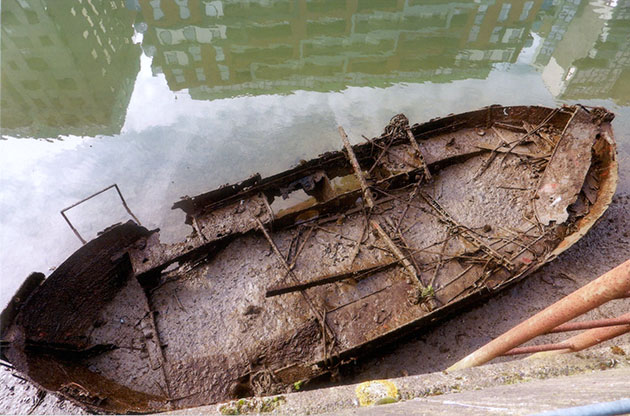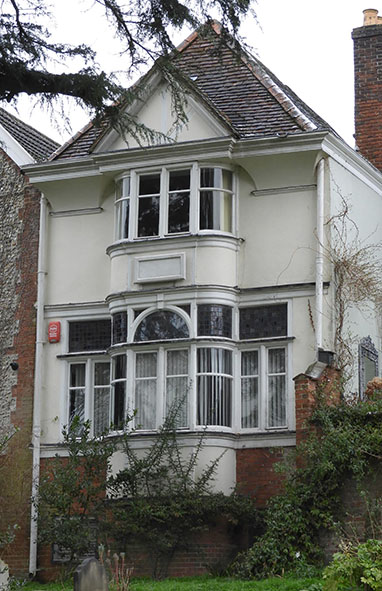- Screen Colours:
- Normal
- Black & Yellow

The boat in the Cut from Fred Sedgwick
This picture shows a rowing boat. I have been taking pictures of it for about ten years now, from different angles, at different tides, in different moods and in different weathers. It’s become something of an obsession.
The boat is in St Peter’s Dock, roughly opposite to the Old Customs House and the ‘Wine Rack’. I’d love to know if any of your members know anything about it. How old is it? Who did it belong to? What did he – or she – use it for? Who climbed up that ladder (just visible in my picture) for the last time, leaving my boat (that’s how I’ve started to think about it – my boat) abandoned? A hundred yards away is another wrecked boat, far, far gone, its shape lost, rough angles everywhere. It resembles an abstract version of ‘my boat’.
I share with John Constable a love of rotting things. He wrote ‘I never saw an ugly thing ... old rotten planks, slimy posts and brickwork, I love such things’. You can see how true that is in his most famous pictures of Flatford, and even more in his Barges on the Stour in the V & A. The decay of the buildings near St Peter’s Dock, those empty windows, those redundant down pipes – they too inspire, if not love, a need to take pictures.
Anyway, I suppose it was in that spirit that I wrote a poem:
When My Ship Comes In
Twice every twenty-four hours the moon
pulls into view my ship that has come in,
drags water seaward. Exposes
wild wooden trapezoids of gunwales,
random planks, pocked, green, diseased,
a dismantled dank ruined ship shape
at such peace. And there’s a ladder
where a few decades ago a man
climbed upwards leaving my ship to die.
But I found it.
Woke it
with a camera click
these lines.
(from Learning outside the primary classroom by Fred Sedgwick, Routledge 2012)
Any information about ‘my ship’ would be welcome.

Ipswich Windows and The Warren from Mark Beesley
I've read your piece in the Ipswich Society Newsletter [Issue 210] about Ipswich windows – very good. We visited Leek in Staffordshire before Christmas. It's a former silk mill town and an architectural history buff's paradise. There is a church and a town house designed by Norman Shaw himself and a lot of buildings designed by a local architect called William Larner Sugden, who was a protégé of Shaw. One of his buildings, a bank, has Ipswich windows.
I've also found one on a house overlooking the churchyard in Woodbridge. Here is a photograph of the window in Woodbridge. It is at the back of a house on Seckford Street, overlooking the churchyard. I've since spotted another one, on the Red Lion pub at Martlesham. Once you start looking for them they're all over the place!
I also enjoyed the article about the big house in Lacey Street and its lost garden.
J. Rotherham Cattermole from Glory Annette Chenery
I was interested to read the item in January Newsletter [Issue 210] headed ‘Rotherham House’. The Ipswich architect J. Rotherham Cattermole was designer of the town’s finest villa: ‘Woodside’ on Constitution Hill. This was the home for many years of Russell Paul of Paul’s Malt. He was a friend of my late father, William Chenery, an early Taxi Proprietor (from 1920) who bought a second-hand Packard from Mr Paul.